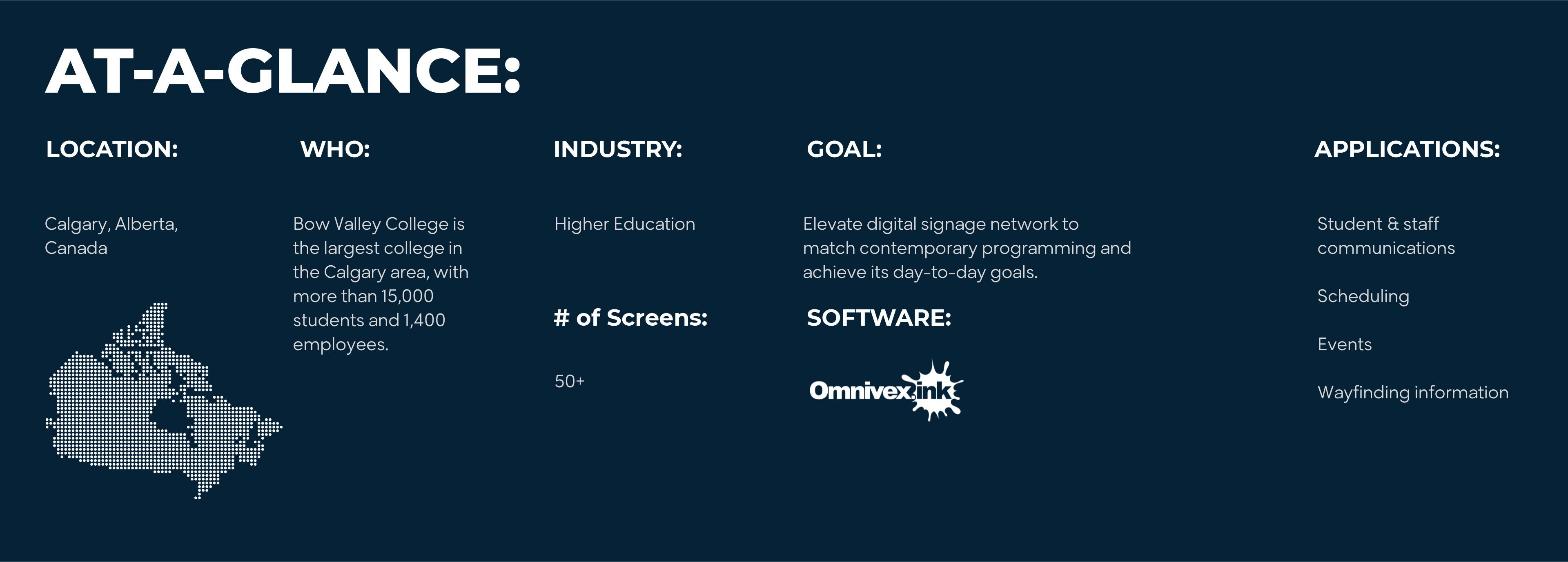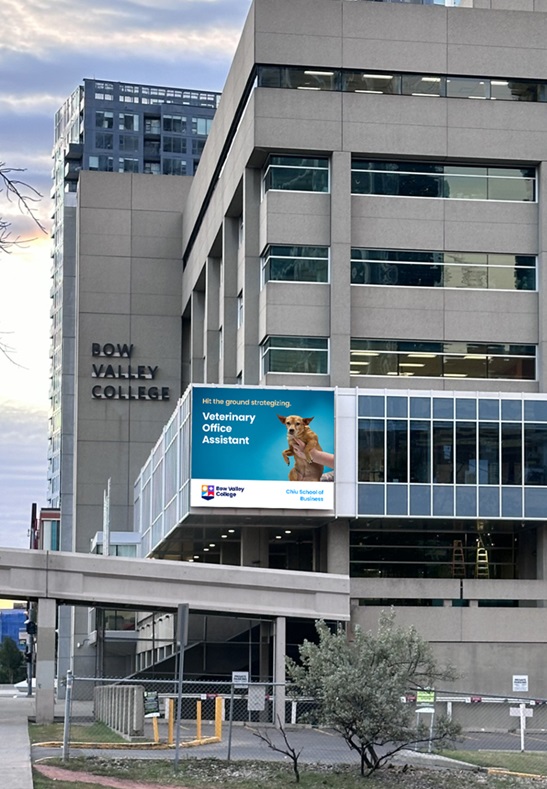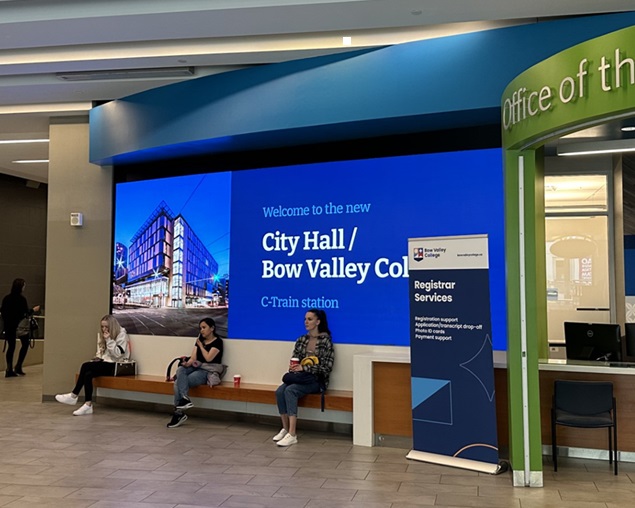
About Bow Valley College
Bow Valley College is the largest college in the Calgary area, with more than 15,000 students and 1,400 employees. Graduates go on to careers in business, entertainment arts, technology, health care, and social services. The college has been named one of Alberta’s Top 80 employers and one of Canada’s Top 50 research colleges. Its innovative applied research, focused on health and health technology, educational technology, and social innovation, is helping shape the future of college education.
The Scope
The city’s largest downtown post-secondary campus, Bow Valley College is highly visible to the broader community, providing a prime opportunity to advertise, taking advantage of covetable owned real estate. The campus enjoys exposure on four busy streets with a mix of corporate and residential audiences and traffic and pedestrians passing by. There is a potential for thousands of impressions a day. The college was searching for an owned advertising channel to capitalize on its location, reaching prospective students and other external stakeholders. In addition, digital solutions would complement the delivery of timely and important announcements to the college’s internal audience.
The college embraces Calgary’s growing digital landscape with exciting new diploma and post-diploma programs in the technology, creative, and healthcare industries. Bow Valley College wanted to elevate its digital signage network to match its contemporary programming and achieve its day-to-day goals.
The Solution
Bow Valley College has more than 50 screens across its campuses powered by Omnivex Ink digital signage software. Most screens are part of their BVCTV network, but some are controlled by departmental users who want to display content specific to their office, program, or students. A handful are controlled by food vendors outside the digital signage team content jurisdiction. The screens in the BVCTV network are HD (1920 x 1080 pixels). They also have a large Jumbotron screen (3696 x 1344 pixels) at the main entrance of our South Campus and two outdoor billboards (1080 x 900 and 480 x 720 pixels). These outdoor billboards have significant exposure, making them valuable for owned advertising.

The primary objective of the digital signage screens is to enhance communication between students, staff, and the college administration. This mode of delivery has not replaced intranet messaging but is being offered with that communications vehicle. The screens are used for various applications, including announcements, scheduling, and take-over events (such as Open House or New Student Orientation), where the entire digital screen network is limited to information specific to that event. The college also uses the network to live-stream college functions (e.g., convocation) across the screens so other students can witness the ceremonies. Bow Valley College is also finding digital signage helpful for wayfinding, particularly with its four portable digital totems. These screens can easily be placed anywhere with messaging specific to an event. With the Omnivex Ink platform, they can now easily target specific hard-mounted screens for use as wayfinding devices as well. For example, when multiple events are happening in the same wing of the campus, custom messaging on each screen helps eliminate confusion for delegates.
%20-%20sm.jpg)
The Results
Bow Valley College hopes to incorporate more wayfinding onto the screens and expand content being pushed to the screens to include live data feeds, video, and more. The college runs 15-second animated clips on its Jumbotron to boost viewer engagement. To maximize the full potential of its two outdoor digital billboards, the college is investigating options beyond static images.

Additionally, there are still a few spots around campus where an extra screen or two would make sense, such as the indoor +30 walking bridge that hundreds (if not thousands) of students pass through to access the North and South towers. If monetizing efforts become a reality, the college may consider installing digital screens inside each elevator car to leverage the captive attention of short-term riders.
